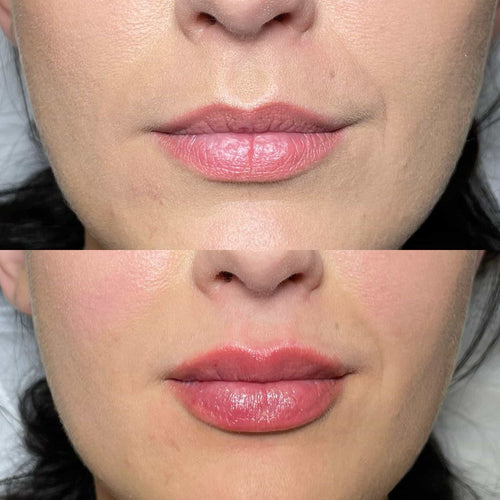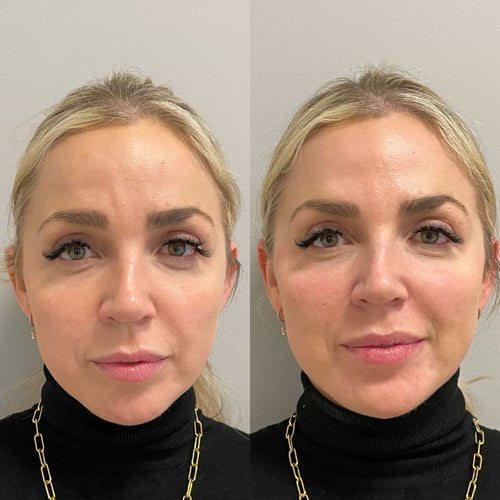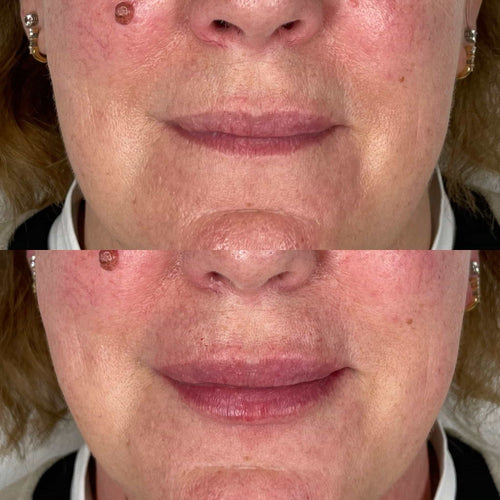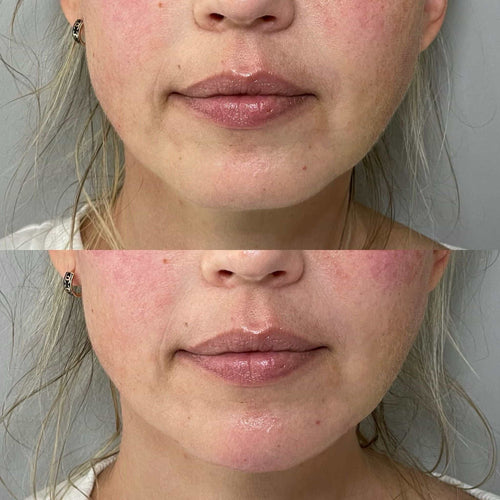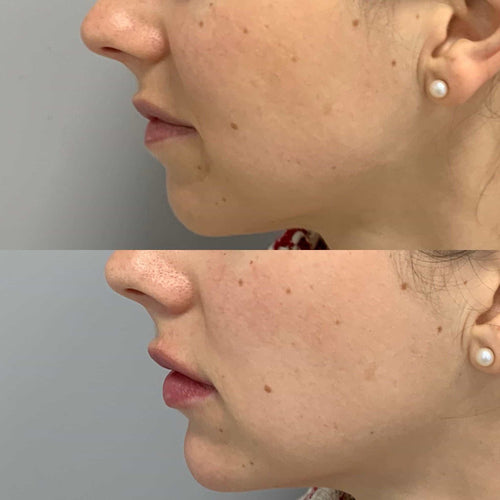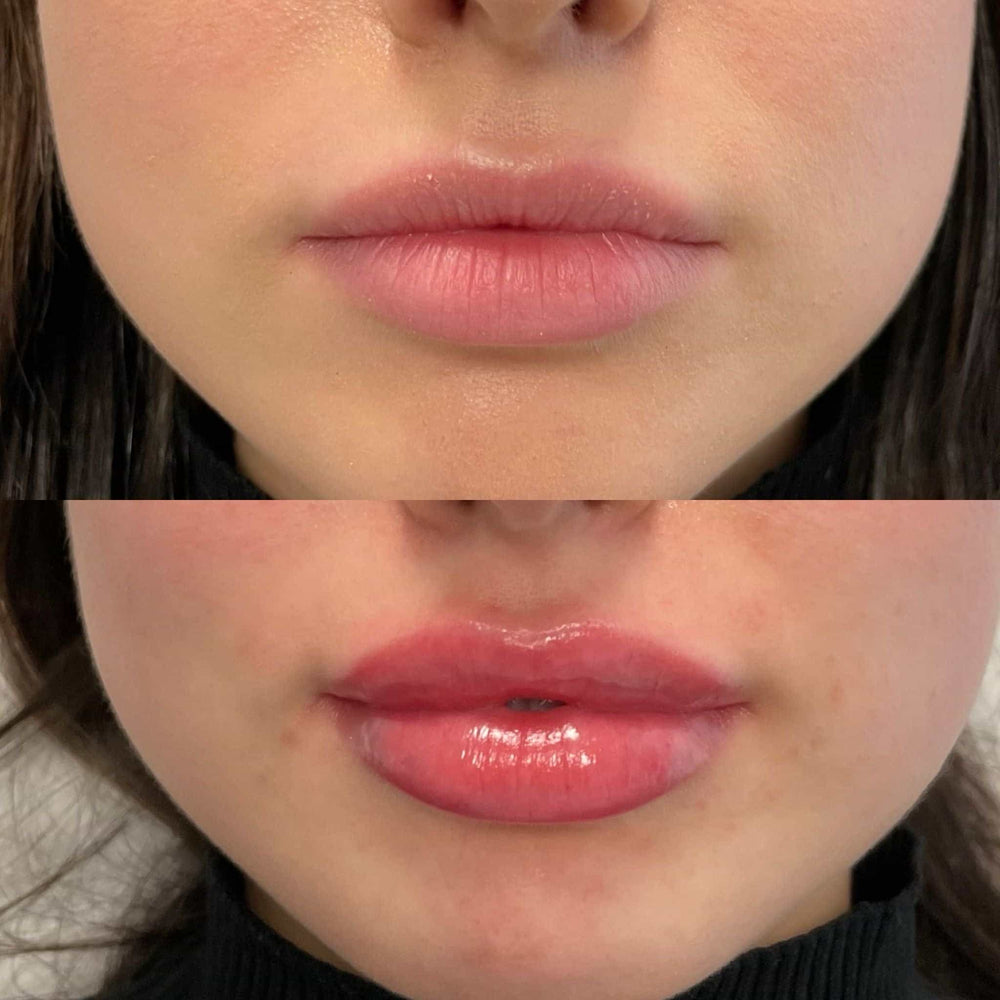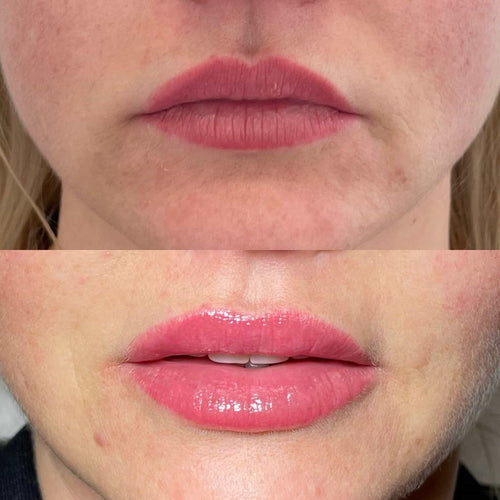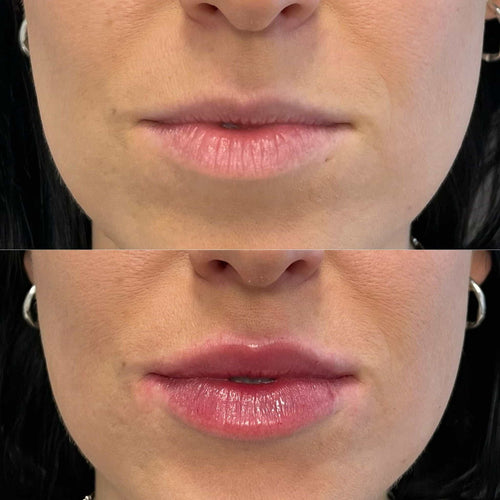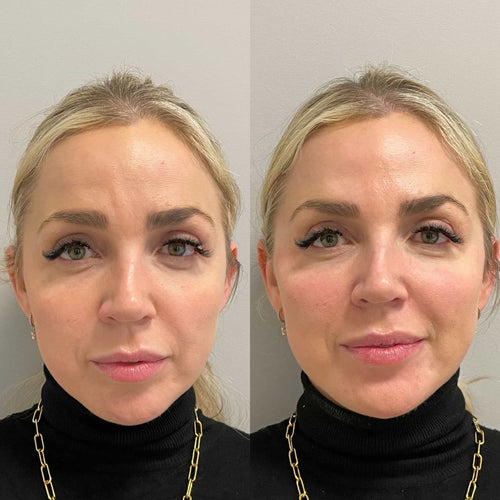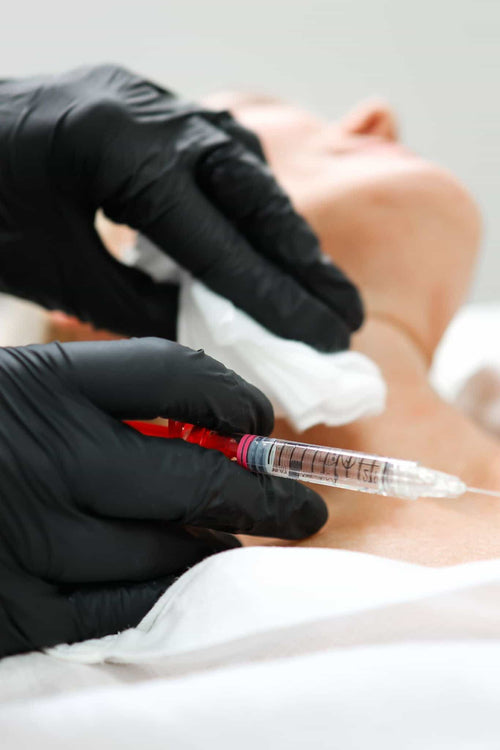Why Has My Lip Filler Disappeared
Schedule a Dermal Filler Session with Dr. Laura Geige
Possible Causes
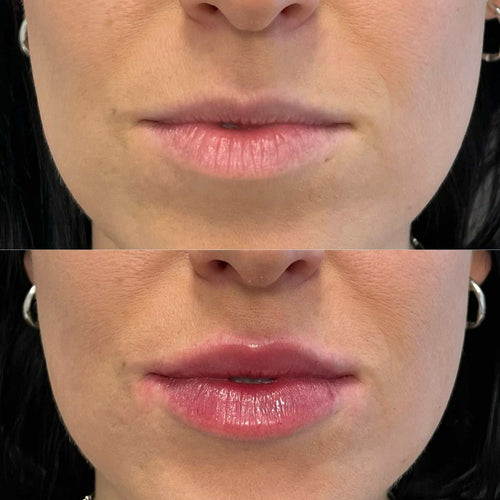
Natural Degradation
There are a few possible reasons why your lip filler may have disappeared faster than expected.
Here are some common causes:
- Natural Degradation: All dermal fillers, including those used for lips, are eventually broken down by the body’s natural processes. This is a normal part of how our bodies process foreign substances.
- Type of Filler Used:** Different fillers are formulated to last different lengths of time. Some hyaluronic acid fillers, which are commonly used in lip augmentation, can last anywhere from 6 months to 2 years.
- Injection Technique:** The way the filler is injected can affect how long it lasts. If the filler is spread too thinly or not injected deeply enough, it may be more likely to be absorbed by the body.
- Individual Metabolism:** Everyone’s body processes substances at a different rate. Some people naturally metabolize fillers faster than others.
- Lifestyle Factors:** Certain lifestyle factors can affect filler longevity. For example, smoking and sun exposure can break down collagen and elastin in the skin, potentially causing fillers to fade more quickly.
If you’re concerned about your lip fillers disappearing too soon, talk to your injector. They can help determine the cause and recommend options for maintaining your desired results.
Dermal Filler Migration
Dermal filler migration can occur when the injected material moves from its intended location beneath the skin.
Several factors can contribute to this phenomenon:
1. Incorrect Injection Technique:** Improper injection technique, such as injecting too superficially or at an inappropriate angle, can increase the likelihood of filler migrating.
2. Type of Filler Used:** Some dermal fillers are more prone to migration than others. Hyaluronic acid-based fillers, particularly those with a larger particle size, may be more mobile.
3. Facial Movement and Expression:** Frequent facial expressions, such as smiling or frowning, can cause the filler to shift over time.
4. **Physical Activity:** Strenuous exercise or activities that involve repetitive facial movements can also contribute to filler migration.
5. **Sun Exposure:** Prolonged sun exposure can break down collagen and elastin fibers in the skin, weakening the support structure for the filler and making it more susceptible to migration.
6. Smoking:** Smoking damages blood vessels and impairs tissue healing, which can increase the risk of filler complications, including migration.
7. **Medical Conditions:** Certain medical conditions, such as autoimmune disorders or infections, can affect skin integrity and contribute to filler migration.
8. **Body Temperature Fluctuations:** Extreme temperatures, both hot and cold, can temporarily alter the viscosity of fillers, making them more mobile.
9. **Allergic Reactions:** In rare cases, an allergic reaction to the filler material can cause swelling and inflammation, leading to displacement.
10. Improper Aftercare:** Failure to follow post-treatment instructions, such as avoiding excessive sun exposure or massage, can increase the risk of migration.
Book a Dermal Filler Appointment with Dr. Laura Geige at It’s Me and You Clinic
Incorrect Technique
There are several possible reasons why lip filler might disappear prematurely, ranging from natural absorption to improper application.
**Natural Absorption:** Hyaluronic acid fillers, the most common type used for lips, are gradually absorbed by the body over time. This process is normal and varies depending on individual metabolism and the specific type of filler used.
Lifespan typically ranges from 6 months to 2 years, though some fillers can last longer.
**Incorrect Technique:**
The way the filler is injected plays a crucial role in its longevity and distribution.
Here’s how incorrect technique could lead to faster disappearance:
-
**Over-injection:** Injecting too much filler can cause it to be pushed out of place, leading to uneven results and faster breakdown.
-
Under-injection: Not injecting enough filler may result in a less noticeable outcome, as the product might not adequately plump the lips and is more susceptible to absorption.
-
Incorrect placement: Placing filler too superficially can cause it to be absorbed more quickly. It should be injected deep enough within the lip tissue for optimal longevity and natural-looking results.
**Lifestyle Factors:**
Certain lifestyle choices can also influence how long lip filler lasts:
-
Sun exposure: Excessive sun exposure can break down hyaluronic acid, leading to faster degradation of the filler.
-
Smoking: Smoking constricts blood vessels and hinders collagen production, potentially accelerating filler breakdown.
**Product Quality:** The type of filler used plays a significant role in its longevity. Some fillers are specifically designed for long-lasting results, while others break down more quickly. Choosing a high-quality filler from a reputable brand can contribute to better longevity.
**Other Medical Conditions:** Underlying medical conditions like autoimmune disorders or certain medications can sometimes affect the body’s ability to retain filler.
If you are concerned about your lip filler disappearing prematurely, it’s essential to consult with a qualified and experienced aesthetic practitioner. They can assess your individual situation, identify any potential contributing factors, and recommend appropriate solutions or adjustments to your treatment plan.
Maximizing Longevity
Maintaining Hydration
Lip fillers are temporary and designed to gradually be absorbed by the body, typically lasting between 6 months to a year or more depending on the type of filler used, individual metabolism, and lifestyle factors.
If your lip fillers have disappeared sooner than expected, there could be several reasons:
-
Filler Type and Formulation: Different fillers are composed of various materials with varying lifespans. Some hyaluronic acid (HA) fillers, for instance, may last longer than others.
-
Injection Technique: The depth and placement of injections can influence how long fillers remain visible. If the filler was placed too superficially, it might be absorbed more quickly.
-
Individual Metabolism: Everyone’s body processes substances differently. Some individuals naturally metabolize fillers faster than others.
-
Sun Exposure: Excessive sun exposure can break down collagen and hyaluronic acid, leading to a reduction in filler longevity.
-
Dehydration: Proper hydration is crucial for maintaining skin elasticity and plumpness. If you’re not drinking enough water, your lips may appear thinner.
-
Smoking and Alcohol Consumption: These habits can accelerate the breakdown of collagen and hyaluronic acid, impacting filler duration.
Maximizing Longevity of Lip Fillers:
-
Choose a Reputable Practitioner: Opt for a qualified injector with experience in lip augmentation.
-
Discuss Filler Type and Lifespan: Understand the expected duration of different filler options.
-
Protect Your Lips from the Sun: Use sunscreen and wear a hat when outdoors. Avoid excessive sun exposure.
-
Hydrate Adequately: Drink plenty of water throughout the day to maintain skin hydration and elasticity.
-
Avoid Smoking and Excessive Alcohol Consumption:
Maintaining Hydration for Lips:
-
Drink Water Regularly: Aim for at least 8 glasses of water daily.
-
Use a Humidifier: Especially during dry seasons or in air-conditioned environments, a humidifier can add moisture to the air and prevent dehydration.
-
Avoid Dehydrating Beverages: Limit your intake of coffee, alcohol, and sugary drinks.
-
Apply Lip Balm Regularly: Look for lip balms with hydrating ingredients like hyaluronic acid, glycerin, or shea butter.
-
Sudden loss of filler:** If your lip filler disappears much faster than expected (within a few weeks), it’s best to consult a doctor. This could indicate a complication or allergic reaction.
-
Signs of infection:**
-
Asymmetry or lumps: **
-
Concerns about results:**
-
During your consultation, bring photos of your lips before and after the filler treatment.
-
Be prepared to discuss your medical history, any allergies you have, and the specific filler used.
-
Ask questions about the cause of the fading and potential solutions.
-
Your doctor may recommend revising your filler treatment based on the cause of the disappearance.
-
This could involve adding more filler to restore volume or dissolving any problematic filler with hyaluronidase, an enzyme that breaks down hyaluronic acid fillers.
-
Follow your doctor’s post-procedure instructions carefully to ensure optimal healing and results.
Protecting Your Lips
Lip fillers are designed to be semi-permanent, typically lasting anywhere from 6 to 18 months. The specific duration depends on several factors, including the type of filler used, individual metabolism, and lifestyle habits.
If your lip filler has disappeared sooner than expected, there could be a few reasons:
• Filler Degradation: All fillers are eventually broken down by the body’s natural processes. The rate of degradation varies depending on the specific filler used. Some hyaluronic acid fillers, for example, are formulated to last longer than others.
• Lip Movement and Expression: Frequent lip movements, smiling, talking, and even sleeping can cause the filler to spread and redistribute over time, leading to a less defined appearance.
• Sun Exposure:** Excessive sun exposure can break down collagen in the lips, which can also affect the longevity of fillers.
• Dehydration:** Well-hydrated skin plumps naturally. Dehydration can make lip fillers appear less prominent.
• Smoking:** Smoking constricts blood vessels and impairs collagen production, both of which can negatively impact filler results.
• Body’s Natural Absorption:** Some individuals metabolize substances faster than others, potentially leading to quicker filler breakdown.
If you’re concerned about the disappearance of your lip fillers, consult with a board-certified dermatologist or plastic surgeon. They can assess your individual situation and discuss possible solutions, including touch-up appointments or alternative treatments.
Maximizing Longevity:
To potentially extend the life of your lip fillers:
• **Choose a Reputable Practitioner:** Seek out a qualified and experienced injector who uses high-quality products.
• **Use Sunscreen Regularly:** Protect your lips from sun damage with SPF 30 or higher daily.
• **Stay Hydrated:** Drink plenty of water to maintain skin elasticity and plumpness.
• Limit Sun Exposure:** Minimize time in the sun, especially during peak hours.
• **Avoid Smoking:** Smoking is detrimental to overall skin health, including lip filler results.
Protecting Your Lips:
<
In addition to maximizing filler longevity, remember to care for your lips generally:
• **Use a Lip Balm Regularly:** Keep your lips moisturized with a hydrating lip balm.
• Avoid Licking Your Lips:** This can dry them out further.
• Exfoliate Gently:** Use a gentle lip scrub to remove dead skin cells and promote circulation.
• **Eat a Healthy Diet:** A balanced diet rich in fruits, vegetables, and omega-3 fatty acids supports overall skin health.
When to See a Doctor
Signs of Complications
Lip filler disappearance can be concerning, but it’s often a normal part of the process. However, if you notice any unusual symptoms or your lips look significantly different than expected, consulting a doctor is essential.
Here are some signs that warrant seeking medical attention:
Unexpected Swelling or Bruising: While some initial swelling and bruising are common after lip filler injections, excessive or persistent swelling beyond a few days could indicate an allergic reaction or infection. If the area is painful or warm to the touch, it’s important to see a doctor immediately.
Discoloration: Redness or darkening of the lips that doesn’t subside within a reasonable timeframe could signal an issue. It could be a sign of inflammation, infection, or even blood pooling.
Asymmetry: If your lips become noticeably uneven after filler injections, it might indicate improper placement or migration of the filler material. This can affect both appearance and function.
Loss of Sensation or Numbness: Temporary numbness is expected after injections due to the anesthetic used. However, persistent numbness, tingling, or a lack of feeling in your lips or surrounding area could suggest nerve damage that requires medical attention.
Difficulty Speaking or Eating: If you experience significant swelling or discomfort that makes it challenging to speak clearly or eat normally, consult a doctor promptly.
Infection Symptoms:**
Fever, chills, pus drainage, or increasing pain are all signs of a possible infection that requires immediate medical attention. An infection can spread rapidly and lead to serious complications if left untreated.
Remember, even if you don’t experience any of the above symptoms, it’s always best to follow up with your doctor after any cosmetic procedure. They can assess your progress, address any concerns, and ensure you’re healing properly.
Consultation and Revision
When lip filler starts to disappear, it’s normal to wonder what’s going on and if you need professional help. Here’s a breakdown to guide you:
When to See a Doctor:
Redness, swelling, pain, warmth, or discharge around the treated area require immediate medical attention.
If your lips look uneven or you have hard lumps, it’s crucial to see a doctor. These could be signs of filler migration or other issues that need addressing.
While some fading is normal, if you’re unhappy with the way your filler looks or feels, don’t hesitate to schedule a consultation.
Consultation:**
Reserve Your Dermal Filler Appointment with Dr. Laura Geige Now
Revision:**
Remember, lip filler is a temporary treatment. Understanding the expected timeline for fading and knowing when to seek professional help can ensure you achieve the best possible results and maintain healthy lips.
Madison Art Therapy My Better Love The Fine Nanny Dejour Magazine Dejour Magazine

